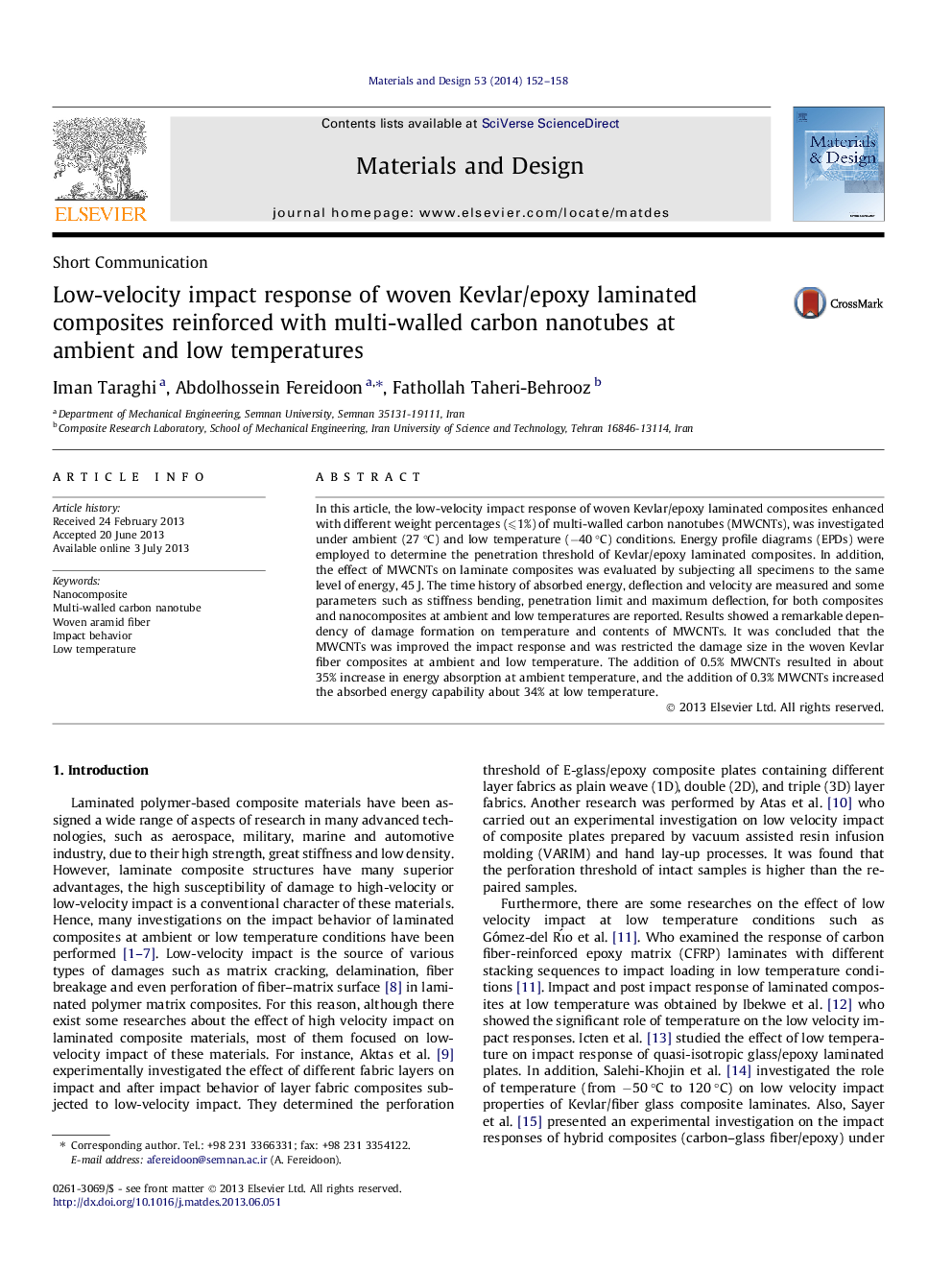| Article ID | Journal | Published Year | Pages | File Type |
|---|---|---|---|---|
| 829725 | Materials & Design (1980-2015) | 2014 | 7 Pages |
•Penetration threshold of Kevlar/epoxy composites were determined by energy profile diagrams.•Remarkable dependency of damage formation on temperature and contents of MWCNTs.•MWCNTs was improved the impact response of woven Kevlar/epoxy composites.•Bending stiffness increased up to 15% by adding 0.5 wt.% MWCNTs at room temperature.
In this article, the low-velocity impact response of woven Kevlar/epoxy laminated composites enhanced with different weight percentages (⩽1%) of multi-walled carbon nanotubes (MWCNTs), was investigated under ambient (27 °C) and low temperature (−40 °C) conditions. Energy profile diagrams (EPDs) were employed to determine the penetration threshold of Kevlar/epoxy laminated composites. In addition, the effect of MWCNTs on laminate composites was evaluated by subjecting all specimens to the same level of energy, 45 J. The time history of absorbed energy, deflection and velocity are measured and some parameters such as stiffness bending, penetration limit and maximum deflection, for both composites and nanocomposites at ambient and low temperatures are reported. Results showed a remarkable dependency of damage formation on temperature and contents of MWCNTs. It was concluded that the MWCNTs was improved the impact response and was restricted the damage size in the woven Kevlar fiber composites at ambient and low temperature. The addition of 0.5% MWCNTs resulted in about 35% increase in energy absorption at ambient temperature, and the addition of 0.3% MWCNTs increased the absorbed energy capability about 34% at low temperature.
